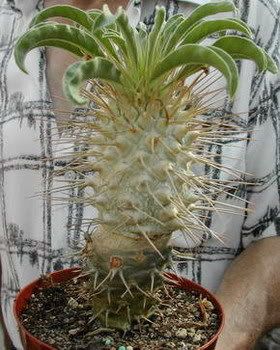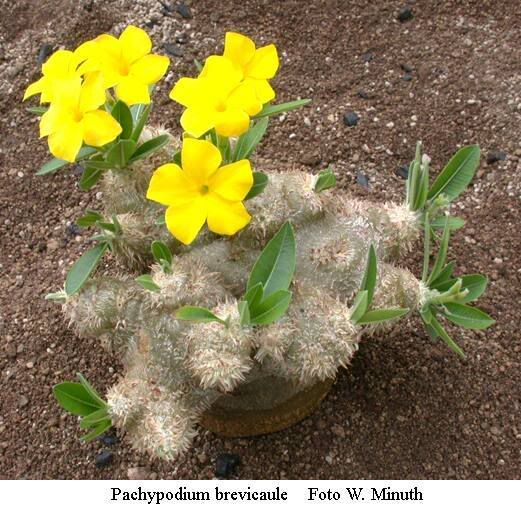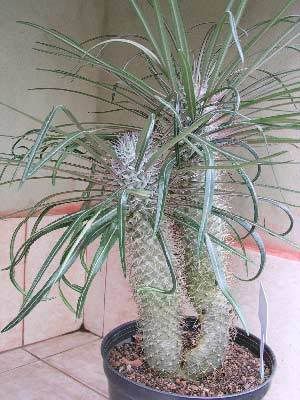Light is composed of mass-less particles ( photons ) moving at a high speed (300 000 000 metres per second ). In one millionth of a second (1 microsecond) light travels 300 metres. The energy carried by the particles determines their colour (wavelength).
We see wavelengths between 400 and 700 nanometers, although the sensitivity of the eye is poor at these limits and more sensitive to the mid-range wavelengths. Most light sources produce a mixture of wavelengths, that we interpret as a particular colour. Different mixtures of wavelengths can produce a perception of identical colours. Light intensity is often mis-understood because of the adaptability of the human eye to a range of lighting conditions. A typical well-lit office environment has about 2000 lux at desk-top level. By contrast, direct sunlight provides at least 8000 lux, more in the tropics where many cacti and succulents originate.
- Sunlight colour temperature of about 6000oK is probably the best type of light that you can give your plants for healthy growth, good leaf colour and flowering. Plants have evolved and adapted to the natural light found in their habitat. Natural sunlight has the great advantage of being free, and generates no greenhouse gases. However, the quantity, and to some extent quality, of sunlight on offer depends on the vagaries of climate, lattitude and time of year. Another negative aspect of sunlight is that a sudden burst of sunshine after the dark winter months can lead to scorch and scarring of plant bodies. This can largely be obviated by good ventilation and timely use of shading.
- Tungsten filament lamps, the commonest domestic type of lamp, produce yellowish-white light with a colour temperature of 2750 - 2850°K and a lot of infra-red. The bulbs are cheap but a relatively inefficient method of lighting and unsuitable for high intensity lighting of large areas. Plant growth is "soft" and elongated.
- Quartz halogen lamps produce a clean white light, at a colour temperature of about 3500°K. There is also considerable production of infra-red in the form of radiant heat which, at close range, may scorch foliage and other delicate materials. It is inadvisable to stare at unfiltered quartz halogen lamps as their high filament brightness, heat and ultraviolet emission may cause eye-damage. Quartz halogen lamps are relatively cheap and require no special starter circuits. However, although their higher filament temperature makes them more efficient than ordinary tungsten filament lamps, they are relatively expensive to run compared with the modern discharge lamps mentioned below.
- Metal Halide (HID) lamps produce an intense bluish-white light, at a colour temperature of 5000-6500°K similar to sunlight, and are one of the most efficient ways of lighting large areas. The compact nature of the arc makes it easy to focus the light on a specific area. Plants grow well with compact growth under HID, but it lacks the red required for flowering. Special starter circuits are required. Check that lamps will operate in a horizonal position if this is required.
- Sodium vapour lamps as often used for street lighting produce almost monochromatic yellow light at 589nm from a low pressure discharge in Sodium vapour. These lamps are efficient but lack of red and blue wavelengths make them less suitable for plant growth. Special starter circuits are required.
- High pressure sodium lamps produce an intense pinkish-white light with a colour temperature of 2050°K from an arc discharge in high pressure sodium vapour and are an efficient way of lighting large areas. Plants grow well under this light, but the colour cast may reduce acceptability for decorative illumination. Versions producing more blue light are available to promote compact vegetative growth, but this is not needed if the lamps are used to augment natural daylight which provides sufficient blue light.
- Fluorescent tubes rely on a low-pressure discharge in a mixture of argon and mercury vapour to produce a line spectrum. Ultraviolet light from the discharge excites the phosphor coating on the inside of the glass envelope. Tubes coated with phosphors designed to emit warm white 2700 - 3000°K, cool white 4100 - 4300°K or "daylight" 5000K to 6350°K light are available as well as specialised phosphors designed for optimal use with plants or fish tanks. Fluorescent tubes are moderately efficient to run and suitable for use in a small growing space. Special starter circuits are required but these are freely available in hardware stores.
- Light Emitting Diodes (LED's) are efficient light emitters, available in a wide range of colours. White LED's are really blue LEDs coated in green and red-emitting phosphors which can be adjusted to produce a cool or warm white output. As the prices of these fall they will become more cost effective for illuminating growing spaces or for spotlighting individual plants. LED's produce very little heat so will not scorch foliage.Ultraviolet LEDs are becoming available and could conceivably be added to banks of white LEDs to simulate intense sunlight and develop the strikingly coloured foliage seen in plants from the tropics and high mountains.
(Get more information at: http://www.succulent-plant.com/)
Sponsor: |
|---|









